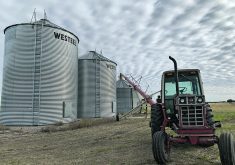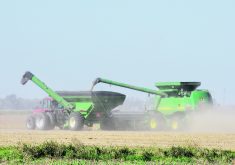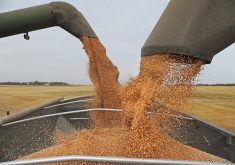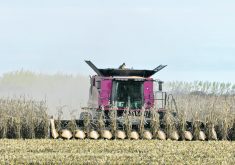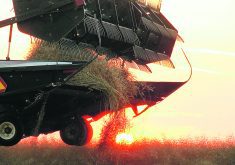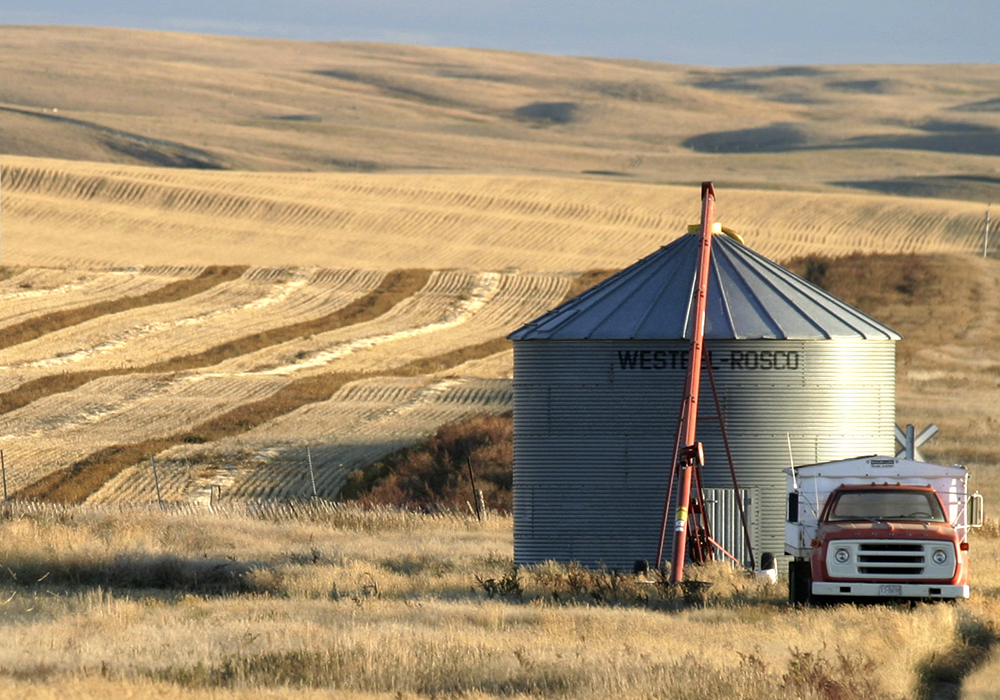Manitoba
Warm temperatures have improved crop development. Harvest of spring wheat, oats and barley has begun in the central and eastern regions.
Southwest
Some preharvest desiccation work has started on crops. Canola, corn and soybean development has been helped by warm weather. Disease pressure from fusarium head blight and sclerotinia are at low to moderate levels.
There are reports of bacterial brown spot, septoria and sunburn on soybean crops.
Some bertha armyworm activity in the Wawanesa, Killarney, Boissevain and Deloraine areas has required control. Grasshopper activity is noted in the eastern and central parts of the region.
Read Also

Alberta looks for agricultural plastic management input
Alberta provincial government giving agriculture industry a say through survey in shaping future plastics management
Northwest
Isolated storms caused damage and lodging to crops, but conditions have been generally positive. Severe crop damage was noted in the Minitonas area following a storm Aug. 6.
Crop conditions are largely good to fair, although some areas affected by early season excess moisture rate fair to poor.
Farmers are starting to combine winter wheat and fall rye crops.
Sclerotinia is reported in canola crops and weed pressure is higher than normal.
Hay yields are average to below average.
Central
Hail in the Portage la Prairie, Headingley, Starbuck and Winnipeg areas caused crop damage.
The winter wheat harvest is underway with yields ranging from 50 to 90 bushels per acre.
Some spring wheat, barley and oats have been harvested with yields of 80 to 100 bu. per acre for barley and 100 bu. per acre or higher for oats reported.
Swathing is underway on the most advanced canola fields, and there are reports of blackleg basal stem cankers.
Bacterial blight and root rot is seen in most soybean fields. The former is also reported in edible bean fields, along with white mould.
Grasshopper activity is also noted in the region.
East
Winter wheat harvest is nearing completion with yields estimated at 70 bu. per acre. Growers are making preharvest applications to cereal crops. Swathing is underway, and some red spring wheat has been harvested. Initial yield reports are 60 bu. per acre with good quality.
Interlake
The winter wheat harvest is wrapping up, while other crops are being swathed. Growers in the Teulon and Stonewall areas are furthest along.
Saskatchewan
Harvest progress lags behind the five-year average. Activity has begun in the southern regions of the province, and operations in northern Saskatchewan are likely to begin within the week.
South
Combining and swathing has started in southern Saskatchewan. Progress was furthest along in the southwest.
Some southwestern areas could use rain, while most crops in the southeast are 10 days to two weeks behind normal development.
There are reports of damage from grasshoppers in the southwest.
Central
Warm temperatures have helped crops mature and allow producers to begin harvesting, although crop development is as much as two weeks behind normal.
Topsoil moisture is largely adequate, although some west-central areas are very dry.
Bertha armyworms have required control in the east-central area.
North
With swathing poised to begin this week, harvest operations are 10 days to two weeks behind normal.
Topsoil moisture is largely adequate, although some northwest areas are dry.
Bertha armyworm are an issue in the northeast, and grasshoppers are a problem in the northwest.
ALBERTA
Warm, dry weather has helped early harvest operations.
Most insect threats are localized, and spraying for pests such as bertha armyworm has been limited.
South
Crop ratings for the region, where harvest operations started mid-month, are positive and the area has continued to see warm weather.
Cabbage seedpod weevil counts are highest in southern Alberta.
Central
The region saw rain and storms earlier in the month, but warmer weather has helped development.
Bertha armyworm activity is noted in the Stettler area, along with cereal leaf beetles in the Olds region.
Northeast
Crop conditions are good to excellent, although minor damage was reported from hailstorms earlier in the month. Bertha armyworms are reported in the Wainwright area.
Northwest
Rain and cool weather in August slowed haying operations in August.
Crop conditions were good to excellent in mid-month and the area saw drier weather in the third week, although temperatures were cooler than other parts of the province.
Peace
Grasshoppers and lygus bugs have been an issue. There are reports of wheat midge, although they are unlikely to cause yield losses.


